HA TINH These days, the molasses production village in Tho Dien commune (Vu Quang, Ha Tinh) is working day and night to cook molasses to serve the market during the Lunar New Year of At Ty.
HA TINH These days, the molasses production village in Tho Dien commune (Vu Quang, Ha Tinh) is working day and night to cook molasses to serve the market during the Lunar New Year of At Ty.
Every year at the end of the 10th lunar month, when winter comes with cold winds, the vast sugarcane fields in Tho Dien commune (Vu Quang, Ha Tinh) begin to be harvested and the molasses pressing season is bustling into the Tet holiday. It seems that the hardships of growing sugarcane to make molasses do not bother the people here, on the contrary, the products are increasingly popular in the market, the selling price is high, so sugarcane growers are more and more attached to this traditional profession.
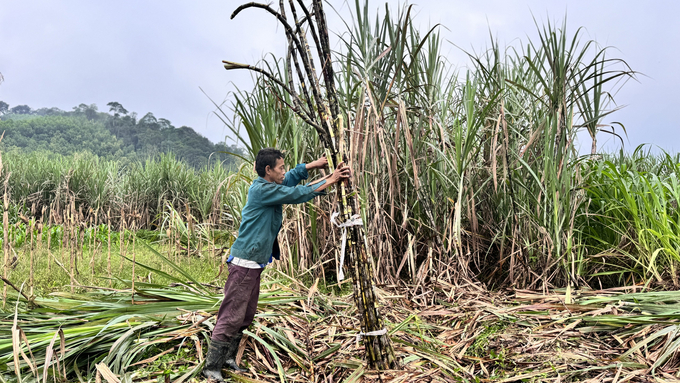
These days, people in Tho Dien commune are busy harvesting sugarcane to press and make molasses. Photo: Anh Nguyet.
Sweet honey season in the border region
Under the light cold of early winter and drizzle, Mr. Nguyen Cong Kien in village 3, Tho Dien commune, hurriedly cut and loaded bundles of sugarcane onto the truck to bring home to make molasses. Although tired, Mr. Kien still could not hide his joy because this year's sugarcane harvest was good and the price of molasses at the beginning of the season was stable as every year. He excitedly said: "This year, my family planted nearly 3 sao of sugarcane, the estimated output was more than 1 ton of molasses, the price of molasses at the beginning of the season is at 30,000 VND/kg and will increase during Tet, my family expects to earn nearly 50 million VND".
Quickly stirring the boiling pan of molasses on the stove, Mr. Nguyen Quoc Toan in Dang Thi village (Tho Dien commune) happily said: “Cooking molasses is also a complicated process, requiring the cook to have the technique and experience to be able to produce delicious batches of molasses. After squeezing the sugarcane juice, the stage is to prepare the stove and firewood for cooking. To have a pan of molasses like this, it takes up to 100 liters of sugarcane juice. After boiling, all the residue will float to the top. At this point, the cook must use a ladle to quickly scoop out all the foam and residue, otherwise it will overflow onto the stove.
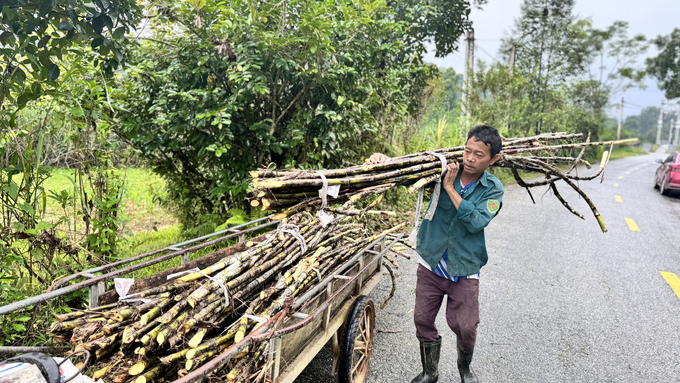
After being cut, the sugarcane will be tied into bundles, loaded onto trucks and taken home to be pressed for molasses. Photo: Anh Nguyet.
After removing the foam and pulp, the sugarcane juice will continue to be put into a large tank to filter clean water. Then continue cooking. The most important thing in the process of cooking molasses is to keep the fire in the stove stable. If the fire is too big, the stirring is not even, the molasses will burn easily, if the fire is too small, the molasses will take a long time to crystallize.
The process of making honey is very elaborate, time-consuming and laborious. At this stage, the cook must stir continuously and evenly. When it starts to boil, if the foam is not removed in time and the honey overflows, the honey will turn black and become less delicious. When the sugarcane juice turns thick and red, the process of making honey is considered complete. This process lasts from 4 to 5 hours.
This year, Mr. Toan's family planted more than 2 sao of sugarcane, with an estimated molasses yield of nearly 800 kg, bringing in an income of nearly 30 million VND. According to Mr. Toan, compared to other crops such as rice, corn, peanuts, etc., the income from growing sugarcane to make molasses is many times higher and the output is more stable.
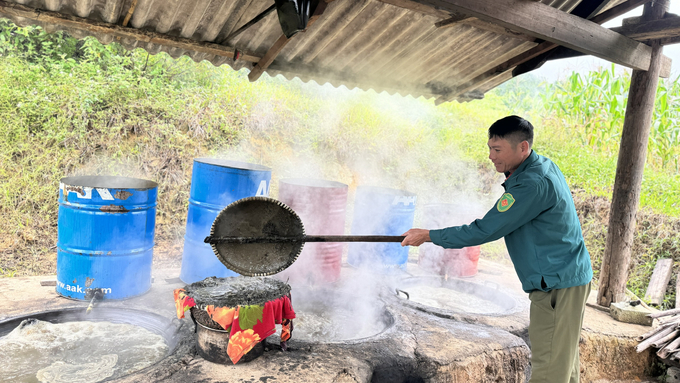
After being pressed and impurities removed, the sugarcane juice will be boiled and stirred continuously, skimming off foam and residue to create a delicious honey product. Photo: Anh Nguyet.
50 years of traditional profession helps people live a prosperous life
These days, at Son Tho Molasses Service Cooperative (Hamlet 1, Tho Dien Commune), the production atmosphere is very urgent. The sound of pressing machines and boiling molasses make the facility more bustling than ever.
Ms. Doan Thi Nhan, Director of Son Tho Molasses Service Cooperative, said: Every year, the cooperative supplies the market with 15,000 - 20,000 liters of molasses. This year, although it is the beginning of the season, the number of customers ordering molasses is so high that the cooperative has to work at full capacity, the cooking area is almost red hot day and night. Currently, we can press about 3 - 4 tons of fresh sugarcane every day, equivalent to cooking about 300 liters of commercial molasses, and on days before Tet, the amount increases to 1,000 liters per day.
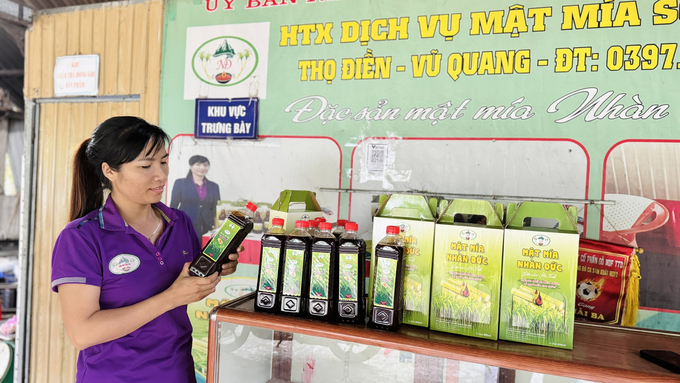
Honey bottles are carefully packaged and have the stamp of Son Tho Molasses Service Cooperative, which makes consumers more confident when using them. Therefore, the cooperative's molasses products sell for a very good price, about 60 - 70 thousand VND/liter. Photo: Anh Nguyet.
According to Ms. Nhan, in 2020, the cooperative's molasses products were recognized as OCOP at the provincial level, thereby affirming the quality of the products and having more opportunities to expand the market. Carefully packaged molasses bottles with the cooperative's stamp are more trusted by consumers when used, so the cooperative's molasses products sell at a very good price, about 60 - 70 thousand VND/liter.
To expand the molasses consumption market, in addition to the traditional sales channel, Son Tho Molasses Service Cooperative has used social networking sites such as Facebook, Zalo... to connect the market. Thanks to that, the product is known to more people.
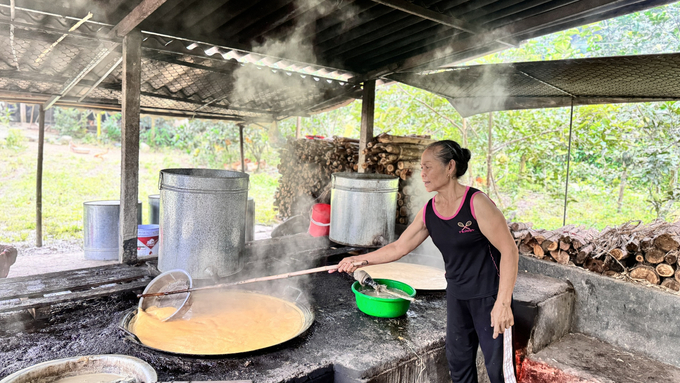
According to the villagers, using firewood to cook molasses is hard work, time-consuming and laborious, but the molasses is more delicious and smoother than the industrial cooking method. Photo: Anh Nguyet.
According to customer reviews, Tho Dien molasses is thick, has a beautiful, eye-catching color and a unique sweet flavor that is unmatched anywhere else. Therefore, at the end of the lunar year, customers from inside and outside the province flock to Tho Dien commune to buy molasses. Ms. Phan Thi Nga in Ha Tinh city came here to buy molasses and said: "For many years, I have only bought molasses here because the molasses is delicious and of good quality. In addition to buying for my family to use, I also buy it as gifts for relatives."
According to the village elders, the molasses making profession in Tho Dien has existed for more than 50 years. In the past, this locality was the largest sugarcane growing area in Ha Tinh province. Seeing the unstable output of sugarcane, Tho Dien people decided to press sugarcane, cook molasses, and determined not to sell sugarcane at a loss. From a few households, gradually as market demand increased, Tho Dien formed a molasses making village, becoming a key occupation in economic development.
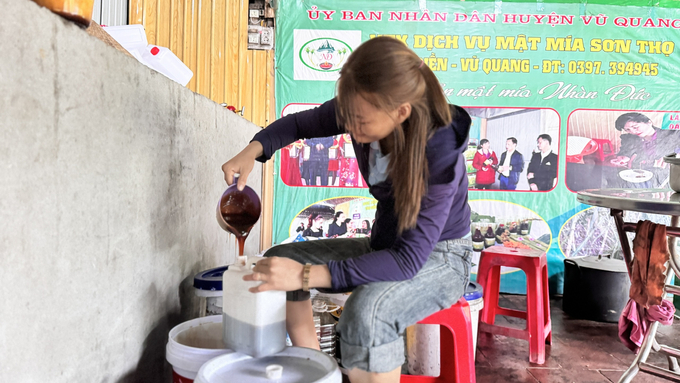
Tho Dien molasses is thick, has beautiful color, and a unique sweetness that is unmatched anywhere else. Photo: Anh Nguyet.
Thanks to making molasses, the lives of many families here are better than in other areas of the district. Some families can earn 20-40 million VND per crop after deducting expenses.
According to Mr. Nguyen Hoang Minh, Vice Chairman of Tho Dien Commune People's Committee, in recent years, sugarcane has become a key crop in economic development and new rural construction in the locality. The whole commune currently produces nearly 30 hectares of sugarcane, supplying the market with an average of nearly 300 tons of commercial molasses each year.
In order to maintain this traditional profession, the local government has supported people to build the Son Tho Molasses Service Cooperative and is currently continuing to mobilize people to participate in the cooperative to expand the scale, concentrate production, improve product quality, and improve people's income.
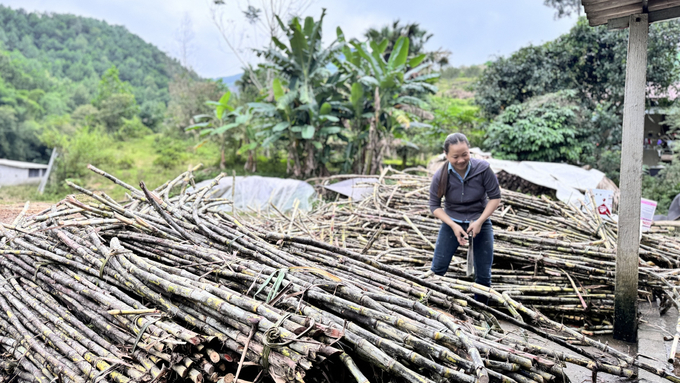
The entire Tho Dien commune produces nearly 30 hectares of sugarcane, supplying the market with nearly 300 tons of commercial molasses each year. Photo: Anh Nguyet.
Molasses making is also very interesting because it will take full advantage of everything from the sugarcane. After taking all the stems, people will leave the tops to continue planting for the next crop. The by-products from the sugarcane are used by people as food for cattle during the cold winter days, very delicious and nutritious.
Source: https://nongsanviet.nongnghiep.vn/lang-nau-mat-mia-truyen-thong-50-nam-do-lua-vao-vu-tet-d411011.html



![[Photo] Closing of the 11th Conference of the 13th Central Committee of the Communist Party of Vietnam](https://vstatic.vietnam.vn/vietnam/resource/IMAGE/2025/4/12/114b57fe6e9b4814a5ddfacf6dfe5b7f)

![[Photo] Overcoming all difficulties, speeding up construction progress of Hoa Binh Hydropower Plant Expansion Project](https://vstatic.vietnam.vn/vietnam/resource/IMAGE/2025/4/12/bff04b551e98484c84d74c8faa3526e0)

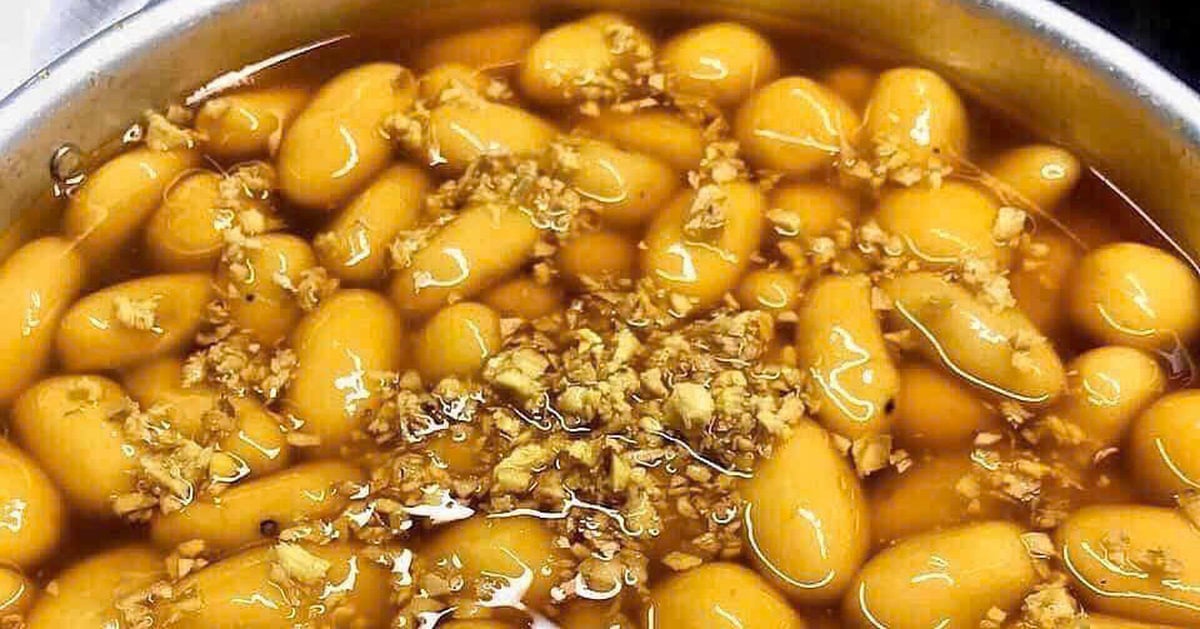



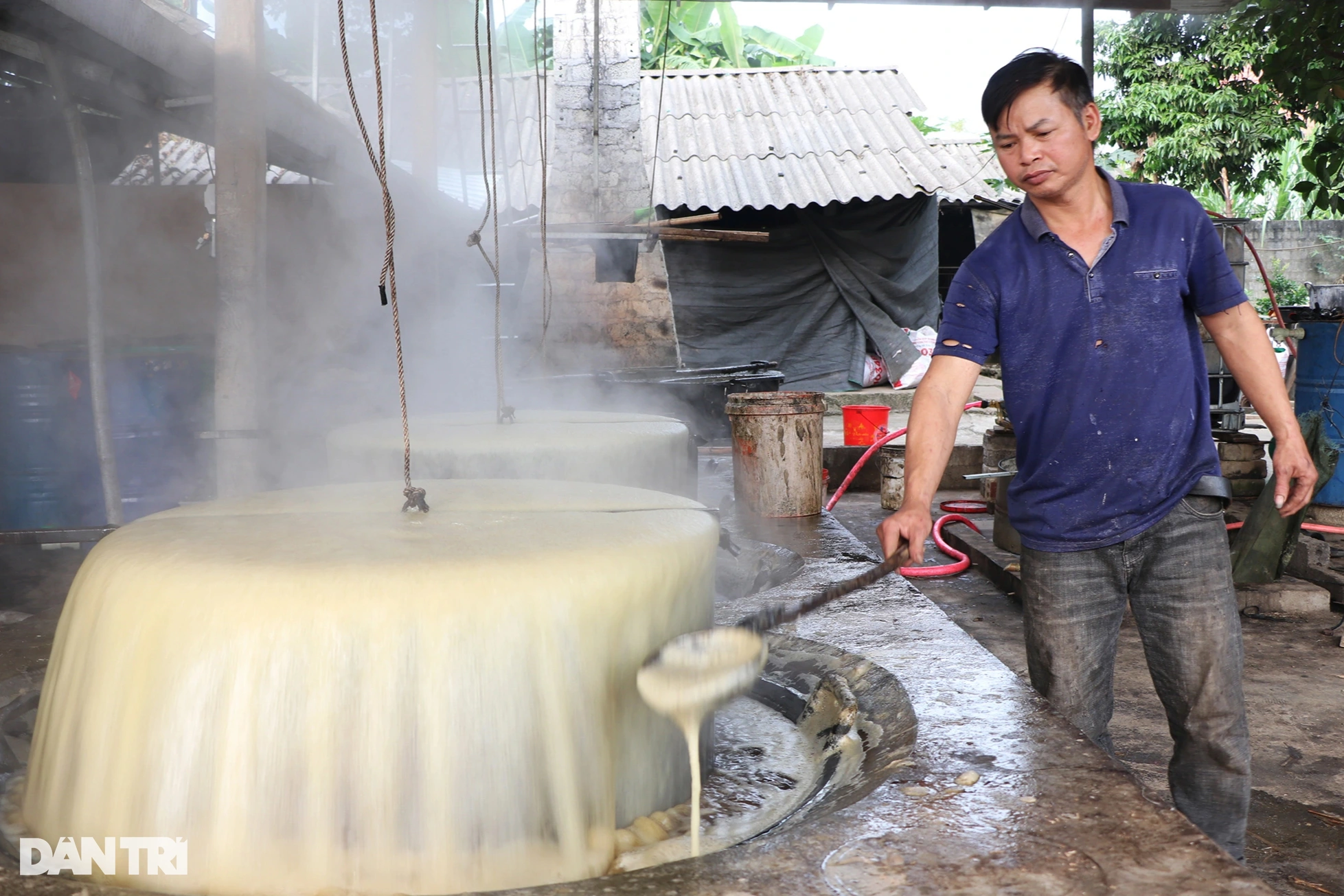


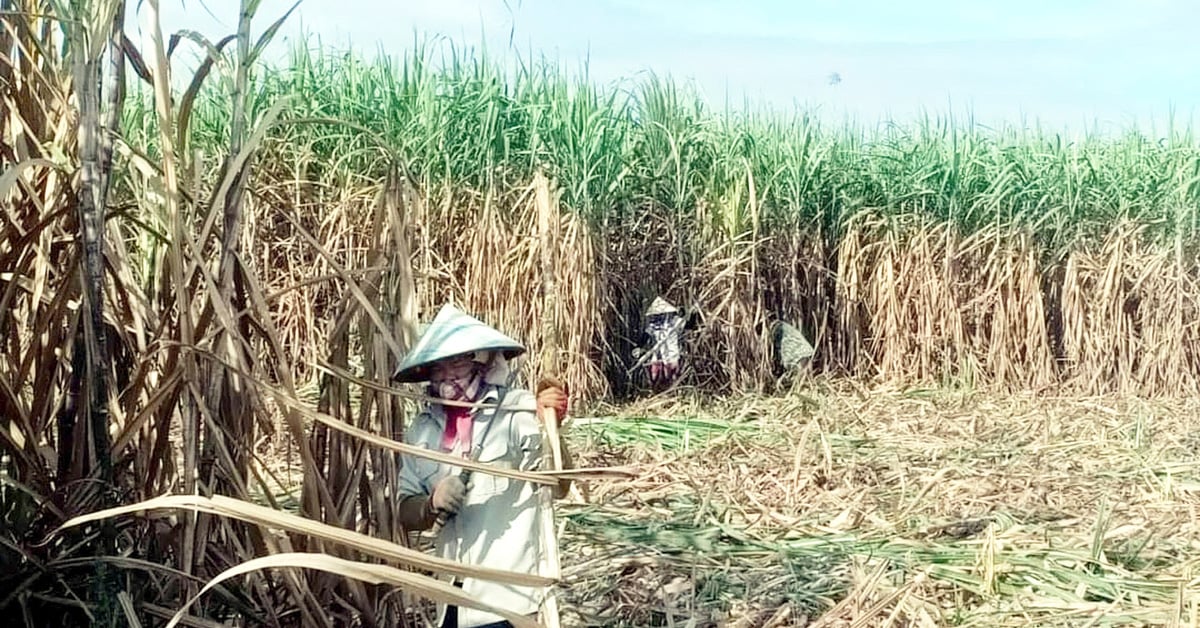











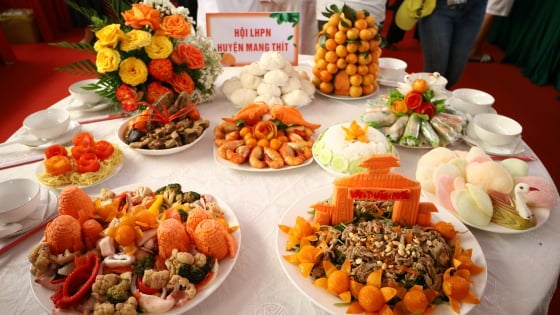

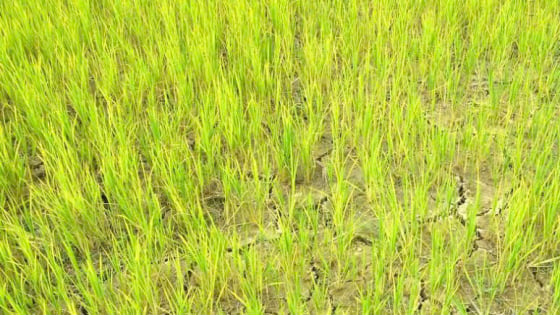

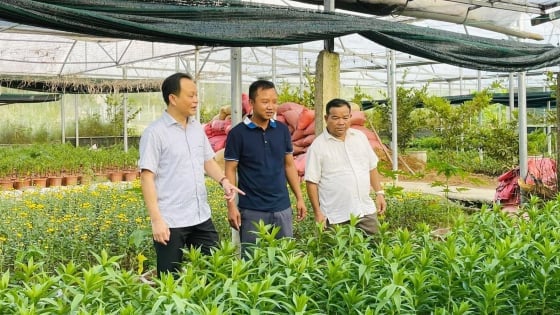
































































Comment (0)